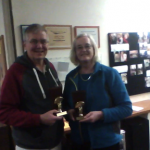Unfortunately, this class has been cancelled for Term Three.
Contact Class Coordinators Margaret or Judy is you are interested in attending for Term Four.
How to do it…

This class is intended to explain how some of the things around us work and how to use them. This will be done in lectures, discussion and practical tasks to help you understand your gadgets. The emphasise will be on basic principles and the good practices that you can derive from them. The level will be as low as possible, the idea being to attract people who do not normally know how things work.

Cliff Strahan is our Tutor. He has a working knowledge of mechanics, plumbing, cars and many other things. Computers will NOT be included. Cliff was a technician in the army and then taught trade electronics. He is a handyman and habitual builder of things.
Note: this class is not held on the last Friday of the month.
History of technology
From Wikipedia, the free encyclopaedia
20th century technology developed rapidly. Communication technology, transportation technology, broad teaching and implementation of the scientific method and increased research spending all contributed to the advancement of modern science and technology. Due to the scientific gains directly tied to military research and development, technologies including electronic computing might not have developed as rapidly as they did in part due to war. Radio, radar, and early sound recording were key technologies which paved the way for the telephone, fax machine and magnetic storage of data. Energy and engine technology improvements were also vast, including nuclear power, developed after the Manhattan project. Transport by rocketry was another significant 20th century development. Most of this work occurred in Germany (Oberth), Russia (Tsiolkovsky) and the United States (Goddard). Making use of computers and advanced research labs, modern scientists have recombinant DNA.
The US National Academy of Engineering, by expert vote, established a ranking of 20 most important technological developments of the 20th Century. Read further at http://en.wikipedia.org/wiki/History_of_technology
Aim of the Course
To improve the participants’ knowledge of the technology behind the things that they use. NOTE Computer systems and programs will not be topics. Hardware might.
Pattern of each session:
- Discuss last week’s question(s)
- Cover a new topic
- General discussion/questions
- New Question for next week(s) Note there is not “right” answer
Methods:
- Power point presentation
- Site visit
- Lecture
- Discussion
- Visiting expert
- Student’s presentation
- Practical exercise
- Library visit
Topics:
- Mostly chosen by students
- Anything technological
- Mostly just one session per topic
Subtopics:
- History: Who invented it, when, why.
- Science: Basic technology, advances.
- Uses: Original, now, future?
